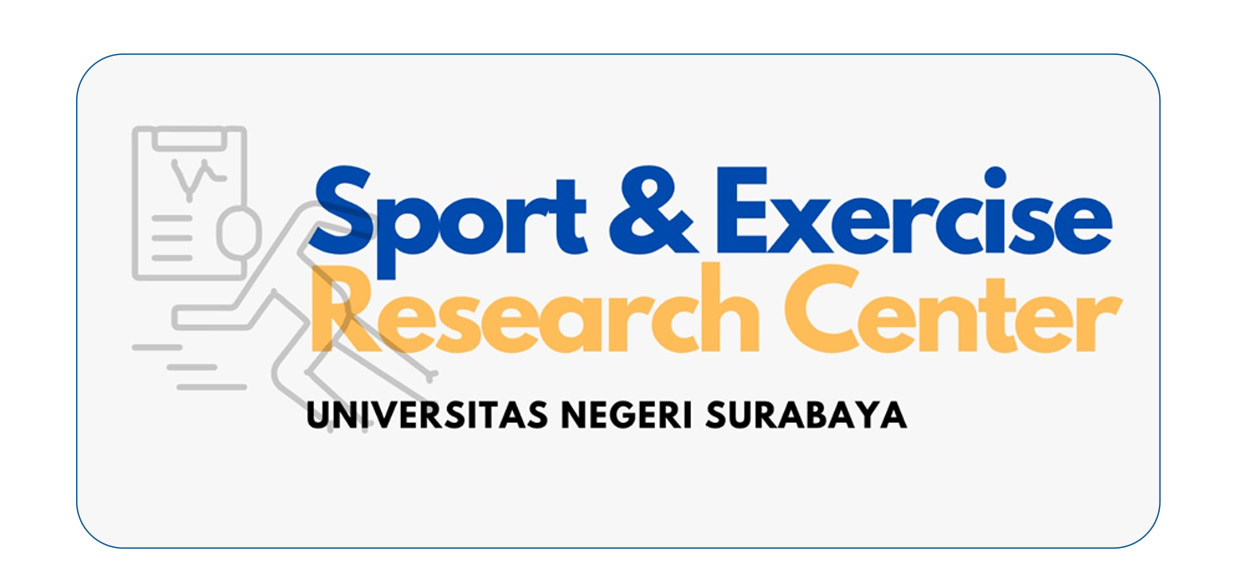Realising Inclusive Physical Education: Barriers and Strategies for Including Students with Disabilities
DOI:
https://doi.org/10.26740/jossae.v10n1.p12-23Keywords:
Inclusive physical education, barriers, strategies, disabilitiesAbstract
Inclusive physical education still faces challenges in practice in regular schools. This study aimed to identify the main barriers and effective strategies in its implementation. Researchers selected a total of 245 physical education teachers from various school levels in Pekanbaru, Indonesia, using purposive sampling based on their experience teaching students with disabilities. Validated for the Indonesian setting, the PEATID III (Physical Educators' Attitudes Towards Teaching Individuals with Disabilities III) questionnaire was used for data collecting with great dependability (α = 0.88). According to results, 68% of teachers reported exclusive attitudes from non-disabled students, 59% had never attended inclusion training, and 68% encountered limits of disability-unfriendly facilities. Implementation of inclusive strategies—such as curriculum customisation, the use of assistive technology, and parent collaboration—strongly connected teachers' favourable opinions with This study validates the need for synergy among instructors' pedagogical preparedness, easily available infrastructure, and school and family social support to provide fair and significant physical learning. The findings of this study significantly help Indonesia's inclusive physical education policies and practices to be developed.
References
Alves, M. L. T., Storch, J. A., Harnisch, G., Strapasson, A. M., Furtado, O. L. P. da C., Lieberman, L., Almeida, J. J. G. de, & Duarte, E. (2017). Physical Education Classes and Inclusion of Children With Disability: Brazilian Teachers’ Perspectives. Movimento, 23(4), 1229. https://doi.org/10.22456/1982-8918.66851
Block, M. E. (2016). A Teacher’s Guide to Adapted Physical Education Including Students with Disabilities in Sports and Recreation (Fourth Edi). Brookes Publishing.
Burhaein, E., Phytanza, D. T. P., & Lourenço, C. C. V. (2025). Adapted physical education: how the character development of students with physical disabilities in Yogyakarta, Indonesia? Retos, 62, 815–826. https://doi.org/10.47197/retos.v62.109767
Debasu, H., & Yitayew, A. (2024). Examining Elements of Designing and Managing of Creating Inclusive Learning Environment: Systematic Literature Review. International Journal of Special Education, 39(1), 33–43. https://doi.org/10.52291/ijse.2024.39.4
Delgado-Gil, S., Mendoza-Muñoz, D. M., Galán-Arroyo, C., Denche-Zamorano, Á., Adsuar, J. C., Mañanas-Iglesias, C., Castillo-Paredes, A., & Rojo-Ramos, J. (2023). Attitudes of Non-Disabled Pupils towards Disabled Pupils to Promote Inclusion in the Physical Education Classroom. Children, 10(6), 1–10. https://doi.org/10.3390/children10061008
Elvira, Setyawan, H., Gontara, Y., Arien, W., & Pavlovic, R. (2024). Legal policy analysis of inclusive schools in Physical Education (pe): human resources and infrastructure challenges for students with special needs Análisis político legal de la implementación de escuelas inclusivas en Educación Física (ef): desafíos de. Retos, 2041(20), 1371–1383. https://doi.org/10.47197/retos.v61.110166
Fikriyah, U. (2018). Legal Protection of Education Right for Person with Disability in Indonesia Compared to Islamic View. International Conference on Diversity and Disability Inclusion in Muslim Societies, 153, 124–132. https://doi.org/10.2991/icddims-17.2018.26
Frumos, L. (2018). Attitudes and Self‐Efficacy of Romanian Primary School Teachers towards Including Children with Special Educational Needs in Regular Classrooms. Revista Romaneasca Pentru Educatie Multidimensionala, 10(4), 118–135. https://doi.org/10.18662/rrem/77
Fuller, S., Ball, L., & Lieberman, L. J. (2022). Off the Sidelines: Allowing Students With Disabilities Equal Access to the Gymnasium. Journal of Physical Education, Recreation and Dance, 93(8), 58–61. https://doi.org/10.1080/07303084.2022.2109919
Gerdin, G., Philpot, R. A., Larsson, L., Schenker, K., Linnér, S., Moen, K. M., Westlie, K., Smith, W., & Legge, M. (2019). Researching social justice and health (in)equality across different school Health and Physical Education contexts in Sweden, Norway and New Zealand. European Physical Education Review, 25(1), 273–290. https://doi.org/10.1177/1356336X18783916
Gkouvousi, S., Kaprinis, S., & Krinanthi, G. (2024). Teachers’ Sentiments, Attitudes and Concerns About Inclusive Education and Self-Efficacy for Inclusive Practices. European Journal of Special Education Research, 10(3), 37–56. https://doi.org/10.46827/ejse.v10i3.5302
Greguol, M., Malagodi, B. M., & Carraro, A. (2018). Inclusion of students with disabilities in physical education classes: Teachers’ attitudes in regular schools . Revista Brasileira de Educacao Especial, 24(1), 33–44. https://doi.org/10.1590/s1413-65382418000100004
Guerrero, M. A., & Guerrero Puerta, L. (2023). Advancing Gender Equality in Schools through Inclusive Physical Education and Teaching Training: A Systematic Review. Societies, 13(3), 1–16. https://doi.org/10.3390/soc13030064
Haegele, J. A., Wilson, W. J., Zhu, X., Bueche, J. J., Brady, E., & Li, C. (2021). Barriers and facilitators to inclusion in integrated physical education: Adapted physical educators’ perspectives. European Physical Education Review, 27(2), 297–311. https://doi.org/10.1177/1356336X20944429
Haegele, J., Zhu, X., & Davis, S. (2018). Barriers and facilitators of physical education participation for students with disabilities: an exploratory study. International Journal of Inclusive Education, 22(2), 130–141. https://doi.org/10.1080/13603116.2017.1362046
Haines, S. J., Gross, J. M. S., Blue-Banning, M., Francis, G. L., & Turnbull, A. P. (2015). Fostering Family-School and Community-School Partnerships in Inclusive Schools: Using Practice as a Guide. Research and Practice for Persons with Severe Disabilities, 40(3), 227–239. https://doi.org/10.1177/1540796915594141
Han, M., Akaydin, Ş., Yilmaz, A., & Koç, S. (2024). Comparison of The Physical Fitness Parameters of Special Education Vocational School Students and Inclusion High School Students. International Journal of Disabilities Sports and Health Sciences, 7(3), 597–607. https://doi.org/10.33438/ijdshs.1436311
Hayun, M., Kartikasari, P., & Lubis, M. (2024). Analysis of the Effectiveness of Implementation of Inclusion Education Program at Lebak Bulus 2 Primary School, South Jakarta. International Journal of Business, Law, and Education, 5(1), 719–727. https://doi.org/10.56442/ijble.v5i1.477
Holland, K., & Haegele, J. A. (2021). Perspectives of Students with Disabilities Toward Physical Education: A Review Update 2014–2019. Kinesiology Review, 10(1), 78–87. https://doi.org/10.1123/KR.2020-0002
Hutzler, Y., Meier, S., Reuker, S., & Zitomer, M. (2019). Attitudes and self-efficacy of physical education teachers toward inclusion of children with disabilities: A narrative review of international literature. Physical Education and Sport Pedagogy, 24(3), 249–266. https://doi.org/10.1080/17408989.2019.1571183
Jansen, W. S., Meeussen, L., Jetten, J., & Ellemers, N. (2020). Negotiating inclusion: Revealing the dynamic interplay between individual and group inclusion goals. European Journal of Social Psychology, 50(3), 520–533. https://doi.org/10.1002/ejsp.2633
Johler, M., & Krumsvik, R. J. (2024). Increasing inclusion through differentiated instruction in a technology-rich primary school classroom in Norway. Education 3-13, 52(8), 1207–1221. https://doi.org/10.1080/03004279.2022.2143721
Kilinc, S. (2022). Mothers of children without disabilities’ conceptions of inclusive education: unveiling an exclusionary education system privileging normality and ableism. Disability and Society, 37(10), 1678–1702. https://doi.org/10.1080/09687599.2021.1888281
Kombe, N. A., Mwakasangula, P. E., & Masue, D. O. (2024). The Adequacy of Physical Learning Facilities Supporting Students with Physical Disabilities (SWPDs) In Tanzania Secondary Schools. International Journal of Social Science and Economic Research, 9(8), 2672–2686. https://doi.org/10.46609/ijsser.2024.v09i08.007
Kumar, R., & Sharma, D. S. (2024). Role of Adaptive Physical Education for Holistic Development of Children With Special Needs. In Futuristic Trends in Social Sciences (Vol. 3, pp. 43–47). https://doi.org/10.58532/v3bbso16p1ch5
Kurniasandi, D., Zulkarnain, M., Azzahra, S., & Anbiya, B. (2023). Strategi Pembelajaran Berdiferensiasi Dan Implikasinya Untuk Menciptakan Pembelajaran Yang Inklusi Di Setiap Jenjang Pendidikan. Jurnal Cerdik: Jurnal Pendidikan Dan Pengajaran, 3(1), 56–64. https://doi.org/10.21776/ub.jcerdik.2023.003.01.06
Kvalsund, R., & Bele, I. V. (2023). Social Inclusion – When the School Lets Go. In Lifelong Learning Book Series (Vol. 31). https://doi.org/10.1007/978-3-031-24247-2_11
Li, C., Haegele, J. A., McKay, C., & Wang, L. (2021). Including students with physical disabilities in physical education in Singapore: Perspectives of peers without disabilities. European Physical Education Review. https://doi.org/10.1177/1356336X211025871
Lieberman, L. J., Cavanaugh, L., Haegele, J. A., Aiello, R., & Wilson, W. J. (2017). The Modified Physical Education Class: An Option for the Least Restrictive Environment. Journal of Physical Education, Recreation & Dance, 88(7), 10–16. https://doi.org/10.1080/07303084.2017.1340203
Liu, X., Han, H., Li, Z., Huang, S., Zhao, Y., Xiao, Q., & Sun, J. (2025). Barriers and facilitators to participation in physical activity for students with disabilities in an integrated school setting: a meta-synthesis of qualitative research evidence. Frontiers in Public Health, 13(March), 1–15. https://doi.org/10.3389/fpubh.2025.1496631
Mahendra, A., Budiman, D., Stephani, M. R., Suntoda, A., Budiana, D., Lubay, L. H., Slamet, S., Sumarno, G., Wibowo, R., Putri, W., Anira, A., & Nugroho, W. A. (2020). Adaptive Physical Education Teachers’ Profile in Indonesia: The Opportunity of Improving Adaptive Physical Education Status. TEGAR: Journal of Teaching Physical Education in Elementary School, 4(1), 11–18. https://doi.org/10.17509/tegar.v4i1.28971
Mawena, J., & Sorkpor, R. S. (2023). Gender variations favouring female students with disabilities in perceived benefits of physical activities and sports participation. International Journal of Sport, Exercise and Health Research, 7(2), 114–121. https://doi.org/10.31254/sportmed.7213
Mawena, J., & Sorkpor, R. S. (2025). Examination of factors influencing students with disabilities participation in physical activities and sports: A phenomenological study. International Journal of Professional Development, Learners and Learning, 7(1), 1–14. https://doi.org/10.30935/ijpdll/15829
McNicholl, A., Casey, H., Desmond, D., & Gallagher, P. (2021). The impact of assistive technology use for students with disabilities in higher education: a systematic review. Disability and Rehabilitation: Assistive Technology, 16(2), 130–143. https://doi.org/10.1080/17483107.2019.1642395
Montgomery, D. (2022). Integrating Technology With Instructional Frameworks to Support all Learners in Inclusive Classrooms. The Open/Technology in Education, Society, and Scholarship Association Journal, 2(2), 1–16. https://doi.org/10.18357/otessaj.2022.2.2.31
Moriña, A., Orozco, I., & Department. (2020). Planning and implementing actions for students with disabilities_ Recommendations from faculty members who engage in inclusive pedagogy. International Journal of Educational Research, 103, 1–19. https://doi.org/https://doi.org/10.1016/j.ijer.2020.101639
Odeh, K. B., & Lach, L. M. (2023). Barriers to, and facilitators of, education for children with disabilities worldwide: a descriptive review. Frontiers in Public Health, 11(January), 1–20. https://doi.org/10.3389/fpubh.2023.1294849
Peranzoni, V. C., Barbosa, N. de Q., Das Chagas, G. D., De Oliveira, V. M. A., & Madaloz, R. F. (2024). Specialized Educational Assistance (AEE) from the perspective of inclusive education. Cuadernos de Educación y Desarrollo, 16(2), e3365. https://doi.org/10.55905/cuadv16n2-047
Qomarrullah, R., Sokoy, F., & Wulandari, L. (2024). Legal Perspective in the Curriculum of Physical Educaton (PE), Sports, and Health in Indonesia. Journal of Physical Education, Sport, Health and Recreations, 12(3), 363–372. https://doi.org/10.15294/peshr.v13i2.6891
Rekaa, H., Hanisch, H., & Ytterhus, B. (2019). Inclusion in Physical Education: Teacher Attitudes and Student Experiences. A Systematic Review. International Journal of Disability, Development and Education, 66(1), 36–55. https://doi.org/10.1080/1034912X.2018.1435852
Rizzo, T. L. (1993). Physical educators’ attitude toward teaching individuals with disabilities - III. Department Kinesiology, California State University.
Sari, M., Nazirun, N., Gazali, N., Irma, A., Septiani, D. Y., & Abdullah, N. M. (2023). Inclusive Instruction in Elementary Physical Education: A Study of Teachers’ Beliefs and Attitudes. Jp.Jok (Jurnal Pendidikan Jasmani, Olahraga Dan Kesehatan), 7(1), 1–17. https://doi.org/10.33503/jp.jok.v7i1.3662
Sari, M., Nazirun, N., Purwanto, S., Rahmadani, A., Omar-Fauzee, M. S., & Abdullah, N. M. (2025). Validating the Physical Educators’ Attitude Toward Teaching Individuals with Disabilities III (PEATID III) Instrument for Physical Education Teachers: Supporting Inclusive Education in Indonesia. Physical Education Theory and Methodology, 25(2), 340–347. https://doi.org/10.1123/apaq.19.2.141
Sari, M., Risma, N., Gazali, N., & Rodia, N. (2022). Inclusion of Students with Disabilities in a Socio-Cultural Perspective: What is the Perception of Physical Education Teachers? Jp.Jok (Jurnal Pendidikan Jasmani, Olahraga Dan Kesehatan), 6(1), 51–62. https://doi.org/10.33503/jp.jok.v6i1.2095
Sridevi, V. (2023). Policies and Strategies in Inclusive Education. Shanlax International Journal of Arts, Science and Humanities, 11(S1i2-Nov), 135–138. https://doi.org/10.34293/sijash.v11is1i2-nov.7333
Wilhelmsen, T., & Sørensen, M. (2017). Inclusion of children with disabilities in physical education: A systematic review of literature from 2009 to 2015. Adapted Physical Activity Quarterly, 34(3), 311–337. https://doi.org/10.1123/apaq.2016-0017
Willis, C. E., Reid, S., Elliott, C., Nyquist, A., Jahnsen, R., Rosenberg, M., & Girdler, S. (2019). ‘It’s important that we learn too’: Empowering parents to facilitate participation in physical activity for children and youth with disabilities. Scandinavian Journal of Occupational Therapy, 26(2), 135–148. https://doi.org/10.1080/11038128.2017.1378367
Yao, W. R. A., Shapiro, D. R., & Liao, C. M. (2016). Parents motivation for participation in physical activity for children with impairments. European Journal of Adapted Physical Activity, 9(1), 15–26. https://doi.org/10.5507/euj.2016.002
Downloads
Published
How to Cite
Issue
Section
License
Copyright (c) 2025 JOSSAE (Journal of Sport Science and Education)

This work is licensed under a Creative Commons Attribution-ShareAlike 4.0 International License.
 Abstract views: 356
,
Abstract views: 356
, PDF Downloads: 256
,
PDF Downloads: 256
, PDF Downloads: 54
PDF Downloads: 54








